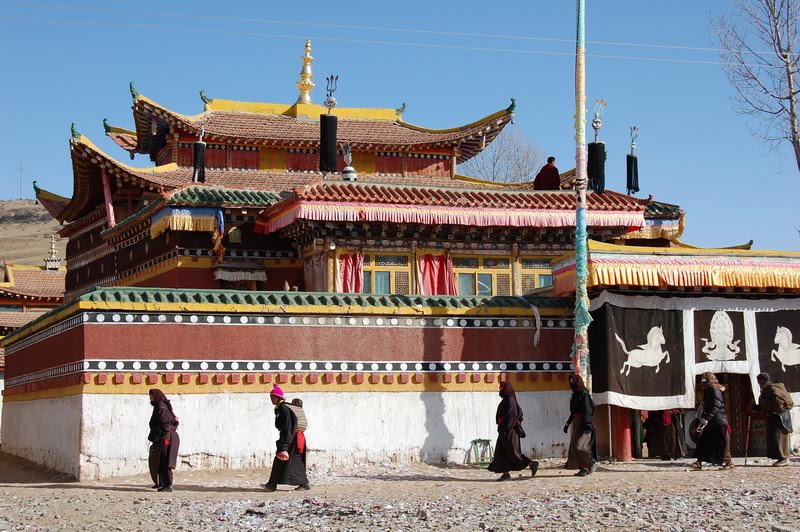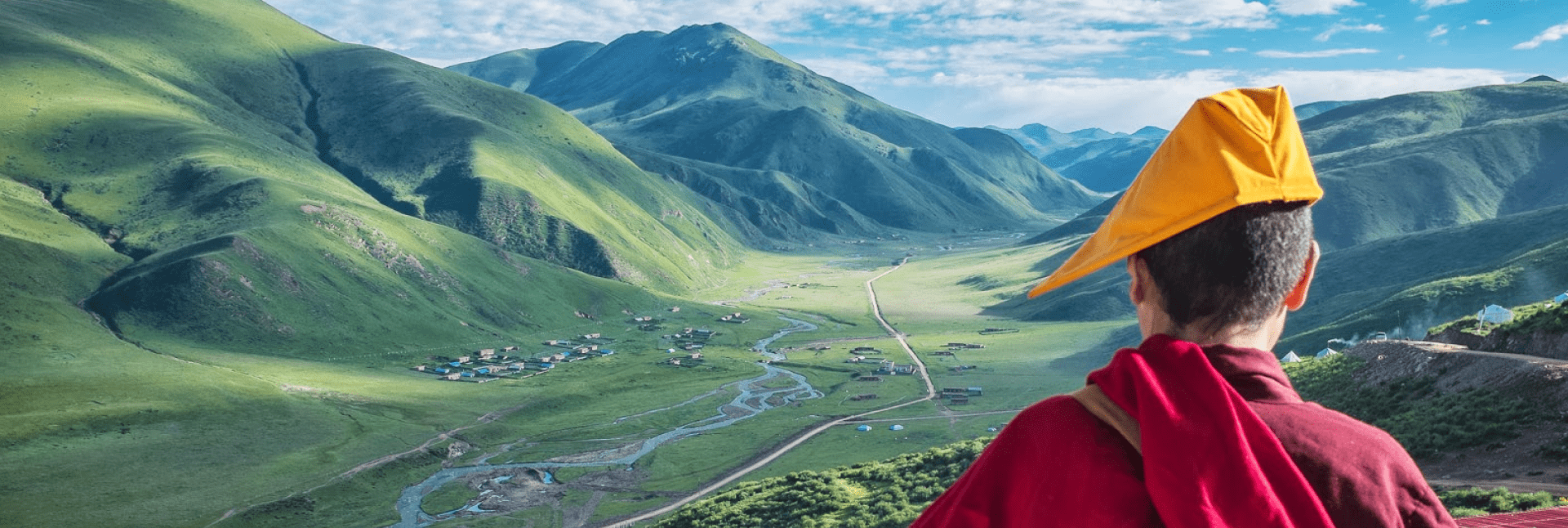“The monks from Ngaba are regarded [by Chinese authorities] as people with a serious disease”
– Kanyang Tsering
Kirti Monastery, of the Gelugpa school of Tibetan Buddhism, has a tradition dating back to the 14th century. Politically important for centuries in the Ngaba region in Amdo, eastern Tibet, it was completely destroyed during the Cultural Revolution, only being rebuilt in 1991.
Following its reopening, Kirti immediately became a centre of resistance and protest. As a result, it was closely monitored and controlled and has frequently been targeted for “patriotic re-education” campaigns, in which Communist Party officials subject Tibetans to intensive Chinese propaganda and demand declarations of loyalty from them.
In 2008, a demonstration by monks and laypeople in Ngaba was fired upon by police, killing 23 people. Following the incident, 100 Kirti monks were arrested and military forces were stationed inside Kirti for nearly a year.

Kirti Monastery in July 2004. (Photo: Xuan Che)
“During 2008 […] the situation inside the monastery was like an army cantonment, the monastery premises were filled with military. The studies or activities inside the monastery were discontinued. And because the monks have seen and experienced all of these situations, they are more politically aware and interested.”
– Kanyang Tsering
Protests and restrictions
Tibet’s first self-immolation took place in 2009 when Tabe, a monk from Kirti, set himself alight on the main road in Ngaba town. Two years later on the anniversary of the 2008 shooting, another Kirti monk, Phuntsok, died staging Tibet’s second self-immolation. A month later, two people were killed trying to prevent the arrest of 300 monks at the monastery. Of the more than 140 recorded cases of self-immolation in Tibet up to February 2016, 13 were by monks from Kirti monastery.
Until recently, Kirti was a vital source of news from inside Tibet, with monks relaying information about protests and human rights abuses to fellow monks in India. However, the monastery is now subject to intense surveillance, with the surrounding area festooned with CCTV cameras, communications closely monitored and a large police station built right next to it. Kirti monks are rarely allowed to travel in pursuit of their studies and other monks are prevented from visiting them. In September 2015, Kirti monks staged a series of individual protests in central Ngaba. All were arrested.
Attention by security forces and the Chinese state has only served to reinforce opposition to Chinese rule inside Kirti monastery and all the evidence suggests it will continue to be a centre of resistance in Tibet.

Free Tibet’s research partner Tibet Watch has published a comprehensive report examining the role of monasteries in defending Tibet – and the price they have paid in repression.
You can read the full report here, as well as the executive summary here.
[Content warning: the above reports contains graphic images of injuries that some may find distressing]

